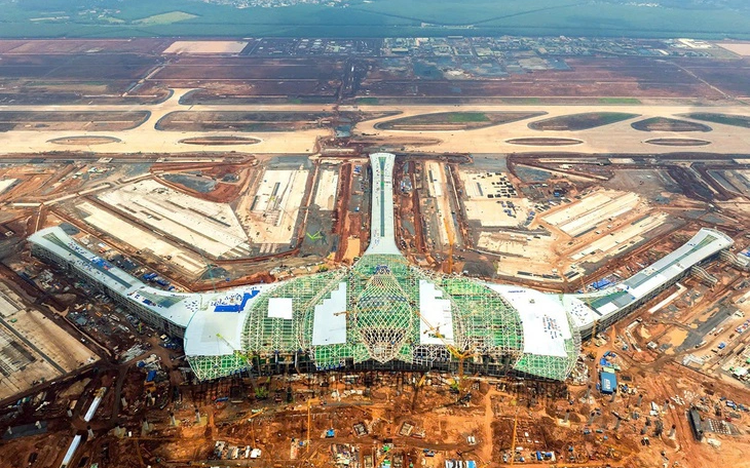
Long Thanh Airport in Dong Nai Province, southern Vietnam is scheduled for inauguration on December 19, 2025 and commercial operations in early 2026. Photo: Quang Dinh / Tuoi Tre
During his eighth inspection of Long Thanh Airport on Saturday last week, Prime Minister Pham Minh Chinh emphasized the importance of seamless transportation connectivity once the airport becomes operational.
He also directed the Ministry of Construction to urgently review ongoing and planned transportation projects linking to the airport.
Ho Chi Minh City was tasked with studying a rail line that would connect Tan Son Nhat International Airport with Long Thanh Airport.
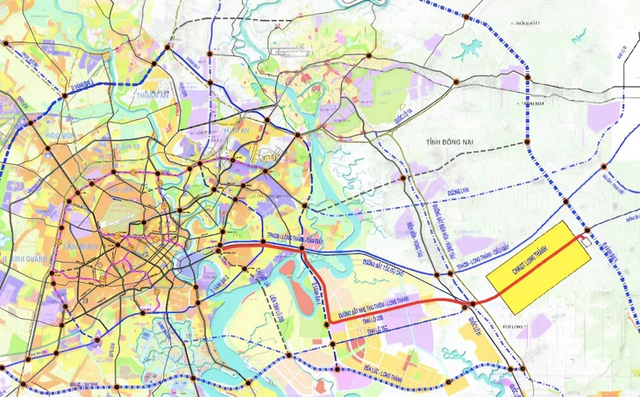
The starting point of the Thu Thiem – Long Thanh railway line is Thu Thiem Station in Ho Chi Minh City, and the endpoint is Long Thanh Airport in Dong Nai Province. Photo: Pre-feasibility report
According to the master plan, the connection between the two airports will involve three rail routes: metro line No. 2, metro line No. 6, and the Thu Thiem – Long Thanh railway.
Metro line No. 2 will connect to Tan Son Nhat Airport, and then link to the Thu Thiem – Long Thanh railway at Thu Thiem Station.
Meanwhile, metro line No. 6, after passing through Tan Son Nhat Airport, will directly connect with the Thu Thiem – Long Thanh railway at the Phu Huu Interchange.
These three projects are being studied independently.
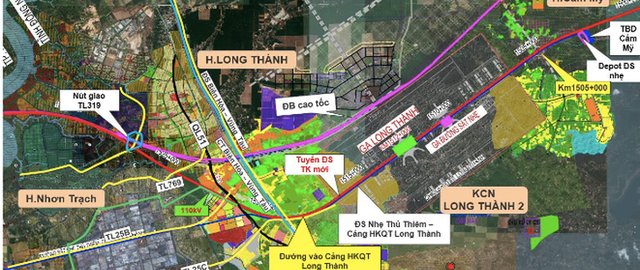
A map shows the Thu Thiem - Long Thanh railway linking to Long Thanh Airport in Dong Nai Province, southern Vietnam. Photo: Vietnamese consulting consortium TEDI-TEDIS
Among them, the Thu Thiem – Long Thanh railway project spans 42 kilometers with a total estimated investment of US$3.5 billion.
The Ministry of Construction is currently completing the pre-feasibility study for this project.
The project will be handed over to Ho Chi Minh City to ensure consistency in the construction, operation, and exploitation of the rail connection between the two airports.
The two metro lines are part of seven metro lines being developed by Ho Chi Minh City under special policies and mechanisms that were approved by the National Assembly through Resolution 188 in February 2025.
Six of the lines are scheduled to begin construction in 2027, while metro line No. 2 is set to start earlier, in December 2025.
Metro line No. 2, with a length of 11 kilometers, requires a total cost of VND47.89 trillion ($1.8 billion).

Thu Thiem Station in Ho Chi Minh City will serve as a passenger hub for the North–South high-speed railway, the Thu Thiem – Long Thanh railway, and metro line No. 2. Photo: Vietnamese consulting consortium TEDI-TEDIS
The Long Thanh International Airport project, with an estimated investment of over VND336.63 trillion ($12.93 billion), broke ground in January 2021 and is being developed in three phases.
Phase 1 is scheduled for inauguration on December 19, 2025 and commercial operations are set to begin in early 2026.
Once phase 1 becomes operational, the airport, with one runway and one terminal, will be able to serve 25 million passengers and handle 1.2 million metric tons of cargo annually.
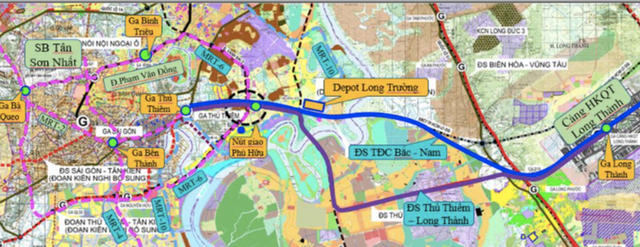
An overview of the planned connection routes for metro line No. 6, metro line No. 2, and the Thu Thiem – Long Thanh railway. Photo: Vietnamese consulting consortium TEDI-TEDIS
When all three phases are finished, likely after 2035, Long Thanh Airport is expected to have four runways and four terminals, with an annual capacity of 100 million passengers and five million metric tons of cargo.
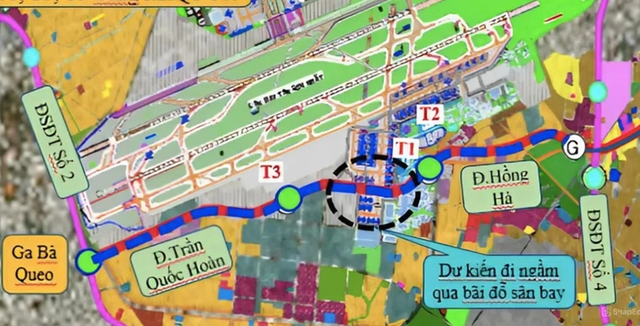
Metro line No. 6 will run from Ba Queo Station to Terminals T3, T1, and T2 of Tan Son Nhat Airport in Ho Chi Minh City. This line will link to the Thu Thiem – Long Thanh railway heading to Long Thanh Airport at the Phu Huu Interchange. Photo: Vietnamese consulting consortium TEDI-TEDIS


Max: 1500 characters
There are no comments yet. Be the first to comment.